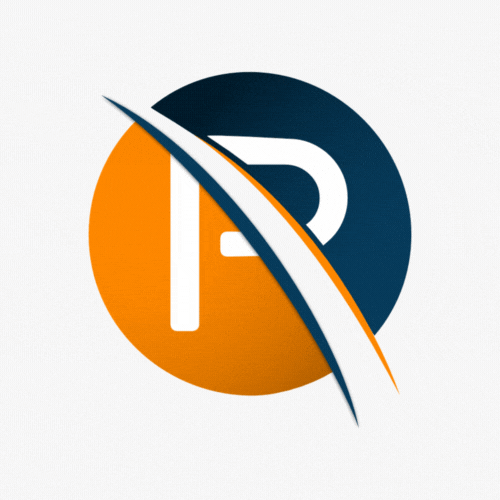Payroll is not only a necessary business function of today, but it is also a fast-growing industry. This is due to the fact that most organizations are not able to do payroll manually anymore and need a system to keep up with factors such as changing legislation and new types of contributions. This is where legacy software came in a few years ago and completely changed the payroll landscape of its day. And although legacy software made great strides in the industry, it does lead to the more significant question of whether it’s still the solution to payroll functions today. But before we enter that evaluation, let’s have a closer look at legacy systems.
What is a Legacy System?
A legacy system refers to an older system, software or technology that organisations continue to use because it still performs the functions it was initially made to do. Although legacy systems can still perform the necessary tasks, there is limited space for growth.
In terms of payroll, legacy systems were once king, based on the new technology of their day over 30 years ago. These innovative systems were a new adoption for companies worldwide and took payroll to the next level. Although once ground-breaking, these systems are limited in their maintenance and upgrades, leading to many problems as technology advances.

Problems with Legacy Payroll Systems
Over the years, innovation focused on improving Legacy Systems by creating updates for the system; however, there is a wall that can’t be overcome. A Legacy System at its core is old technology built with the world of then in mind. It wasn’t built with the smartphone in mind or even your online workspace. This is why your Legacy System struggles to connect with your modern technology.
You may face the following fundamental issues with legacy software:
- The performance is slower.
- It’s out-of-date with current payroll requirements.
- The system is not compatible with your pc.
- There’s limited functionality.
- There’s a lack of innovative product development.
- There’s no custom reporting or limited reporting capabilities.
- Maintenance is costly and futile as a new system for new technology will be around the corner or already available.
- Yearly legislation and contribution updates are harder to implement.
Why Companies Choose to Stay with Legacy Payroll Systems
You may be surprised, but many companies prefer to stick with their legacy system despite its problems.
Why?
- It still works for what they need it for.
- The fear of change within a company
- Transferring the data can be difficult and risky.
- To avoid implementation hassles and costs.
- To prevent software training costs.
These are all valid reasons, but you may not realise what holding on to legacy software is actually doing to your company. What I want to highlight is that if your company is ok with not moving forward, the excitement and drive for growth and innovation may just become a memory of the past. This could perhaps be highlighting a bigger issue in your organisation.
In an article on shrm.org, Sam Grinter, senior research analyst at Gartner, said:
“Failure to modernise payroll systems has real costs. Outdated, heavily customised applications require scarce and often costly resources to adapt to changing legislative compliance requirements and shifting end-user demands.”
The good is the ultimate enemy of the best. In this case, we see how innovation brought Legacy systems to the foreground; however, we are in a different time when innovation has selected a new king to take business forward.

Is Cloud Software the New King?
Innovation is working its hand to bring cloud payroll to the forefront of payroll solutions. The internet has indeed connected people and systems, and cloud payroll aims to do the same for every business. Cloud, therefore, provides the best modern solution for our payroll challenges.
Cloud Payroll gives the Employee, Manager, Business Owner, and Payroll Manager access to payroll information from anywhere, anytime from any internet-capable device. This access has inspired solutions such as Employee Self-Service (ESS) and Manager Self-Service (MSS). ESS Allows employees to apply for leave and claims, as well as check and download their payslips. There is no need to wait for correspondence as their ESS is updated in real-time. MSS Gives managers the same access to the employees allowing him/her to make requests on behalf of their team. The manager also gets the employee requests in real-time and can reject, approve, and send requests easily with no pile of paperwork to manage and pass to HR. Through this, Employees and Managers have been equipped to handle HR Queries right from their mobile device and, in turn, reduce admin and paperwork.
Book a Software Demo

How Cloud Software Handles Complexities and Changes
Quote by People Management, Samantha Mann, senior policy and research officer at the Chartered Institute of Payroll Professionals, points out that: “The list of elements that make up payroll is endless. Over the years, more and more have been added, from pay rates to overtime hours and ad-hoc allowances. As systems have evolved, this has meant that payroll workers often do not fully understand why they perform certain tasks in certain ways.”
With all these changes and added elements of payroll, it’s become essential for organisations to adopt a payroll system. Cloud payroll software, specifically, helps with the following payroll elements:
Payroll Compliance
Through cloud solutions, we have found better ways to tackle payroll challenges and keep systems in line with new changes. This is done through automated updates of legislative changes, e.g., when tax increases, the system will automatically increase rates on the system for calculations. This has made compliance a breeze.
Better User Experience
Thanks to software development and continual innovation, user interfaces have improved and become more simplistic and user-friendly, allowing for faster use and easier learning.
A faster payroll process is every payroll administrator’s dream. Cloud software allows for this speed by streamlining and automating tasks to process payslips, gather reports, view budgets, and update data.
Upgrading is Easy
To keep up with technology and payroll changes, many new functions and capabilities must be added to payroll software. With cloud, updates are automated, so the user does not have to worry about downloading the latest version of the software and installing the updates. This also makes bug fixes in the updates much quicker for the software provider to implement. Ultimately, the user can just log in to the cloud-based system and enjoy the software without worrying about expensive or difficult installations.
Never Lose Data
On cloud, you don’t need to create multiple backups and update backups in different locations. Every change you make is automatically backed up.

Cloud Solutions also solve the following issues presented in legacy software.
- Payroll and HR’s reliance on IT for accurate business data
- The complexity and cost of integrations
- Managing a global workforce
- Quickly responding to changing markets
- Outdated interfaces that are unpleasant to use
Conclusion
Although legacy software was groundbreaking in its day and still works to a certain degree, cloud software has become better suited to today’s technology and people’s on the go lifestyle. With benefits such as easy access, automated software and legislative updates and secure backups, it may well be worth those implementation and training costs in the long run.
Get Cloud For Your Business
References
- 7 Reasons Not To Renew Your Legacy Payroll Fees
https://www.payspace.com/7-reasons-not-to-renew-your-legacy-payroll-fees/ >7 Reasons Not To Renew Your Legacy Payroll Fees | PaySpace - 3 Signs It’s Time to Update Your Legacy Payroll System https://www.joinblvd.com/blog/3-signs-its-time-to-update-your-legacy-payroll-system
- WHY LEGACY PAYROLL SYSTEMS ARE HARMFUL TO YOUR BUSINESS “https://www.crestpayroll.com/Why-legacy-payroll-systems-are-harmful-to-your-business.html” https://www.crestpayroll.com/Why-legacy-payroll-systems-are-harmful-to-your-business.html
- Why Do Companies Use Legacy Software? (With Definition) https://www.indeed.com/career-advice/career-development/legacy-software
- Why an old payroll solution spells trouble? https://www.accountantsdaily.com.au/sponsored-features/15772-why-an-old-payroll-solution-spells-trouble Why an old payroll solution spells trouble?
- Payroll: Making the Case for Change, How to build a case for a single payroll solution that aligns with business
https://www.kronos.com/resource/download/18046 >18046 (kronos.com).


